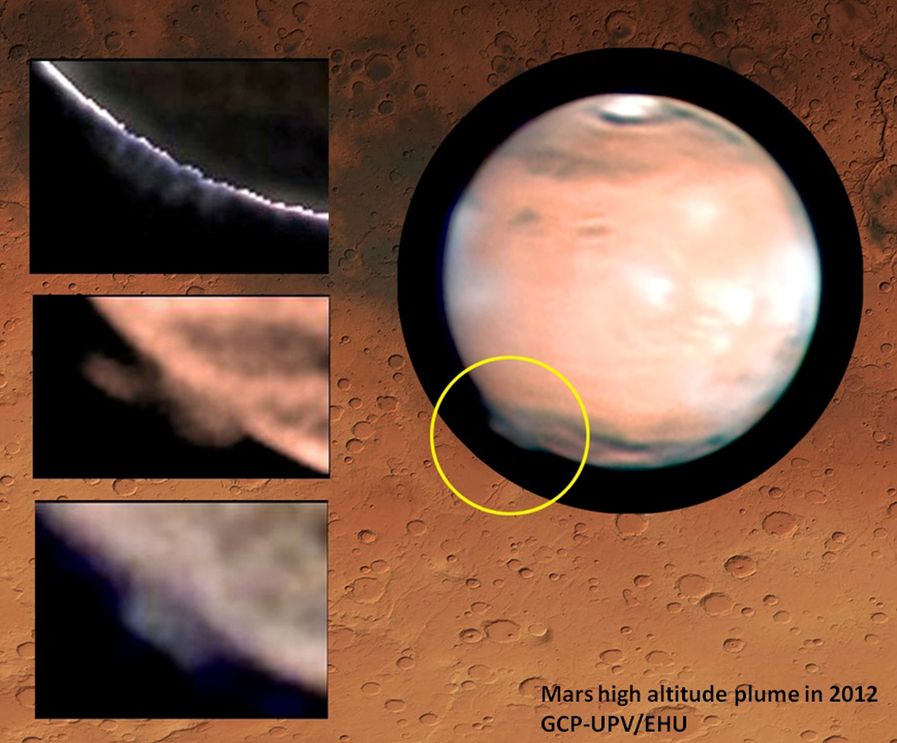
Amateur astronomers have spotted two clouds rising from the Martian surface, and nobody knows how they can exist.
Gigantic plumes, rising to 155 miles and spread over 300-600 miles, have been detected erupting on the Red Planet by amateur astronomers. Spotted in the southern hemisphere of Mars, the plumes arose over 10 hours and lasted more than a week.
The plumes were first picked up in March and April 2012 by Wayne Jaeschke, an amateur astronomer who spends about 100 nights a year watching the heavens. Interestingly, their professional counterparts have no clear idea about the two cloudy projections, extending from the surface of Mars.
“At about 250 km, the division between the atmosphere and outer space is very thin, so the reported plums are extremely unexpected. Any explanation we can think of challenges our understanding of the upper atmosphere of Mars,” says Agustin Sanchez-Lavega, a professional astronomer at the University of the Basque Country, Spain.
“The fact that it was seen by multiple observers suggests pretty strongly that it’s real. But I find the observation puzzling,” says Bruce Jakosky of the University of Colorado, and principal investigator for the Mars Atmosphere and Volatile Evolution Mission, which is currently orbiting Mars.

Plumes erupting from Mars have been captured before by the Hubble Telescope and on databases of amateur images; however, they have never risen more than 62 miles.
The stumped scientists are now using the Hubble data along with amateur images to find out what the plumes are made of and what might be causing them to occur. “One idea we’ve discussed is that the features are caused by a reflective cloud of water-ice, carbon dioxide-ice or dust particles, but this would require exceptional deviation from standard atmospheric circulation models to explain cloud formations at such high altitudes,” Agustin adds.
One scientist, though, is cautious about the claims. “I don’t think it’s real…basic physics says this can’t occur,” says Todd Clancy, planetary scientist at the Space Science Institute, adding that Mars’ upper atmosphere doesn’t supply the necessary ingredients for clouds.
The astronomers’ only hope is that the mysterious incident happens again and since they’re numerous, widely spread, and dedicated, amateurs will discover this if they look in the right direction at the time that it happens.

Post a Comment